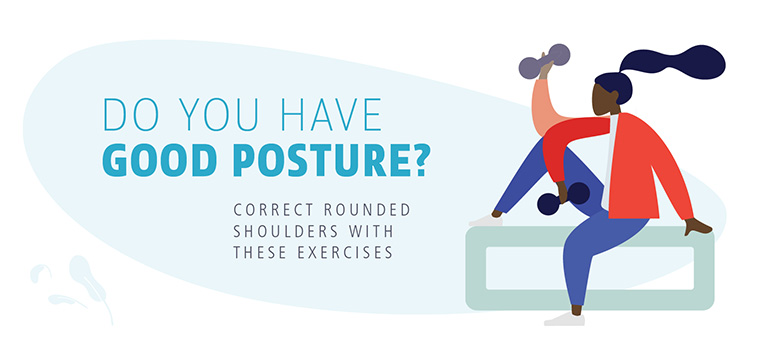Even without a professional assessment, most people will be quick to answer that no, they do not have good posture. Why? Sometimes it is as obvious as a visual imbalance in the neck, shoulder and upper back area. Sometimes it is from symptoms of pain, discomfort, numbness or tension. Even a general weakness or a lack of flexibility in the upper torso is a sign to most that their posture can use some work.
What can you do to improve your posture?
If there is pain or other severe symptoms it is always suggested to consult with your health care provider or work with a physical or manual therapist to relieve some of these symptoms. If there is pain, managing it should be the priority. If this is your case your therapist will often also give you homework exercises to keep up with.
Quality exercise selection
You can do all the wrong exercises in the gym and leave with worse posture!
Below are exercises recommended to correct one of the most common postural imbalances: rounded shoulder syndrome.
Remember that a professional assessment is key to prevention as well as finding the right solution for you.
Being more aware
Regular self-reminders to sit up straight can go a long way.
Ergonomics
Your workspace and daily routine should be a posture friendly environment. If it isn’t, you may soon experience carpal tunnel, TSO or other symptoms. If you feel you need help with this and have not done so already, get in touch with Corby, the college Ergonomic Specialist: [email protected]
BE MORE ACTIVE
Movement truly is medicine. A lack of movement can cause general weakness, muscle atrophy and contribute to illnesses and early death. Just being more active can help you avoid several symptoms and illnesses including bad posture.
STRETCHING
Stretching tight areas can also relieve symptoms of bad posture.


Recent Comments